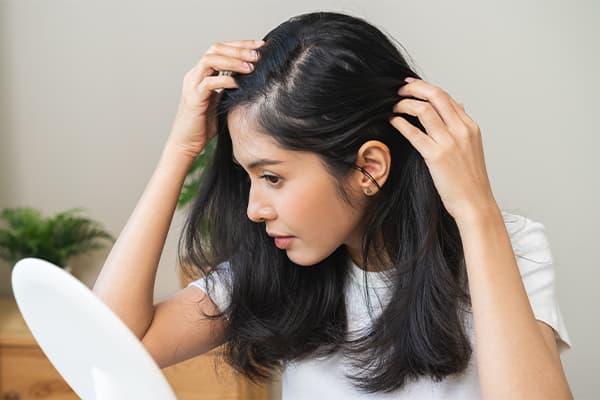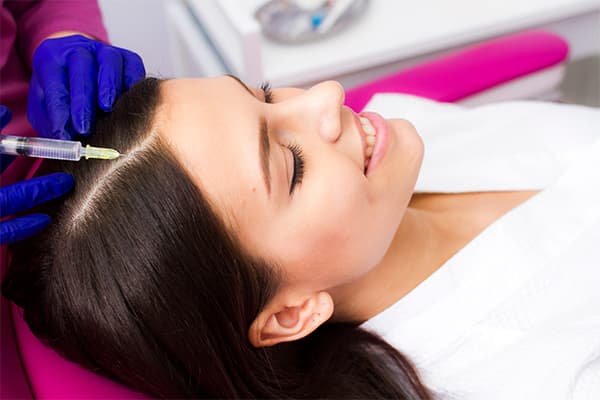Hair Loss: Recognizing the Warning Signs
Aditi Patel
Best Hair Aware Editor
Hair is a very important aspect of our identity and self-expression. This is why hair loss and thinning is a cause for concern for many, often leading to issues with self-esteem and confidence. However, this condition is a common experience. In fact, anyone may suffer from it, no matter the age and gender.

Hair loss and thinning is caused by a variety of factors. This includes hormonal and lifestyle changes, underlying health conditions, and genetics. In this article, we take you into the subtle yet very important indicators and warning signs of hair loss and thinning.
How Hair Thinning and Loss Happens
Androgenetic alopecia, more commonly referred to as hair thinning, is when the hair density and thickness gradually reduces. This phenomenon affects both male and female. But patterns and levels of progression differ between men and women. The main cause of this condition is most often genetic predisposition. Some people simply inherit genes that make them more prone to the effects of hormones on hair follicles.
Hormonal Changes and Hair Thinning
Your hormones play a crucial role in your hairs’ health, and hormonal changes may cause hair thinning. For both male and female, dihydrotestosterone (DHT) is the type of hormone which can bind to the hair follicles which then causes it to shrink over time. As it shrinks, your hair strands become thinner and finer. Although hormonal changes and fluctuations are a natural occurrence throughout our lives, imbalances or heightened sensitivity to certain types of hormones may expedite hair loss and thinning.
4 Warning Signs of Balding
- Increased Shedding: One of the most common signs is an increase in the number of strands that you shed when you brush or wash your hair. Although hair loss and shedding is a natural part of the hair’s growth cycle, excessive shedding points to an abnormality in your hair’s growth cycle. When left untreated, this may eventually lead to balding.
- Widening Part: Another telltale sign of hair loss is when the part of your hair becomes wider. As hair follicles shrink or miniaturize, your hair’s overall volume decreases, making your scalp more visible at the crown and parting areas.
- Reduced Hair Density: You may also notice a reduction in your hair’s overall density. For many individuals, this is more evident in the frontal and crown regions of their scalp, as this is where the hair tends to be more susceptible to dihydrotestosterone (DHT).
- Changes in Hair Texture: While it is a more subtle sign, you should also check any changes in your hair’s texture. Your hair may appear finer, softer and overall less robust as it loses its thickness and fullness.
Top 5 Causes of Hair Thinning
- Genetics: Does your parents or grandparents have androgenetic alopecia? If your family has a history of hair thinning, then your chances of also having this condition are higher.
- Hormonal Changes: Another contributor to hair loss is changes in your hormones such as during puberty, pregnancy, and menopause . While hormonal fluctuations throughout our lifetime is a natural occurrence, such changes may lead to hair thinning and eventual baldness. If you suffer from PCOS, thyroid disorders, and other conditions which disrupt your hormonal balance may also affect your hairs’ health and lead to pattern baldness.
- Poor Nutrition: Vitiamin and mineral deficiency negative affect your hair’s health. If your intake of iron, zinc, and vitamin D is inadequate, it may lead to hair thinning and loss.
- Stress: Chronic stress affects your hair’s natural growth cycle, it triggers increased shedding which leads to eventual hair loss. Telogen effluvium, a type of rapid hair loss, is caused by high and chronic stress levels.
- Lifestyle Factors: Lifestyle factors such as drinking and smoking damage your hair’s health and contribute to hair loss. Furthermore, frequent wearing of tight hairstyles, using heat styling equipments and other chemical treatments may also exacerbate hair damage which would to thinning and loss.
The first step towards understanding and addressing hair loss is recognizing the firs warning signs. Whether hair loss is caused by heredity, hormonal changes, or lifestyle factors, early awareness of the first signs will enable you to determine possible interventions.
We understand that hair loss and thinning negative impact ones’ self-esteem. But there is an abundance of available treatments and interventions to help you regain your hair’s fullness and vitality.







